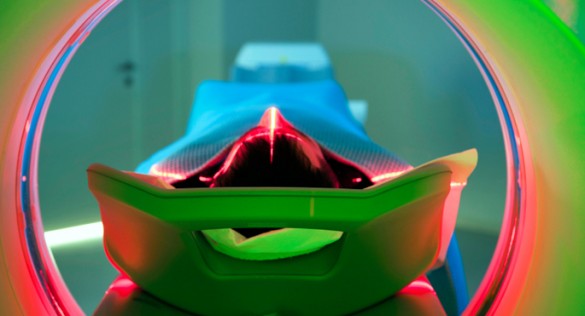by Henry H. Ong
Visualizing tumors is crucial for proper diagnosis and treatment. Near-infrared (NIR) fluorescence is a promising optical imaging technique due to its sensitivity to specific disease-related molecules. Development of NIR probes that show only tumor and not non-tumor tissues, a common problem with current methods, would be invaluable.
Reporting last month in the Journal of Biomedical Optics, Vanderbilt scientists Jashim Uddin, Ph.D., Lawrence Marnett, Ph.D., and colleagues developed a new NIR probe called fluorocoxib C that targets cyclooxygenase-2 (COX-2). COX-2 is an enzyme found in inflammatory lesions and tumors, but not in most normal tissues.
By imaging a human cancer mouse model, they were able to validate that fluorocoxib C detects tumors that express COX-2 and is exceptionally long-lived. This allowed imaging to be delayed after probe injection, which greatly enhances tumor visibility because of the clearance of fluorocoxib C from tissues that do not express COX-2.
This technique has broad applications in diagnosing, monitoring, and treating patients with cancer.
The research was supported in part by National Institutes of Health grants CA128323, CA182850, CA013646 and CA089450.
Send suggestions for articles to highlight in Aliquots and any other feedback about the column to aliquots@vanderbilt.edu














